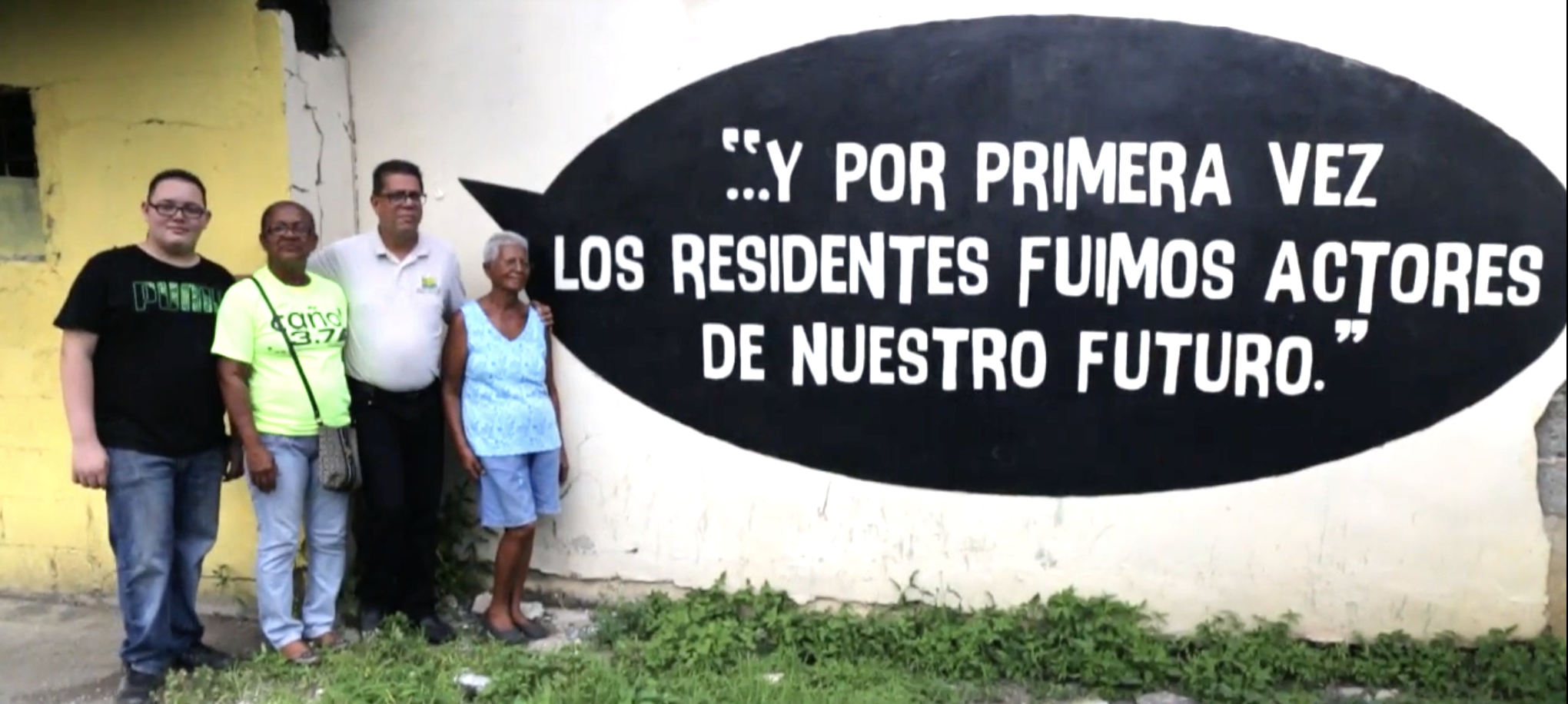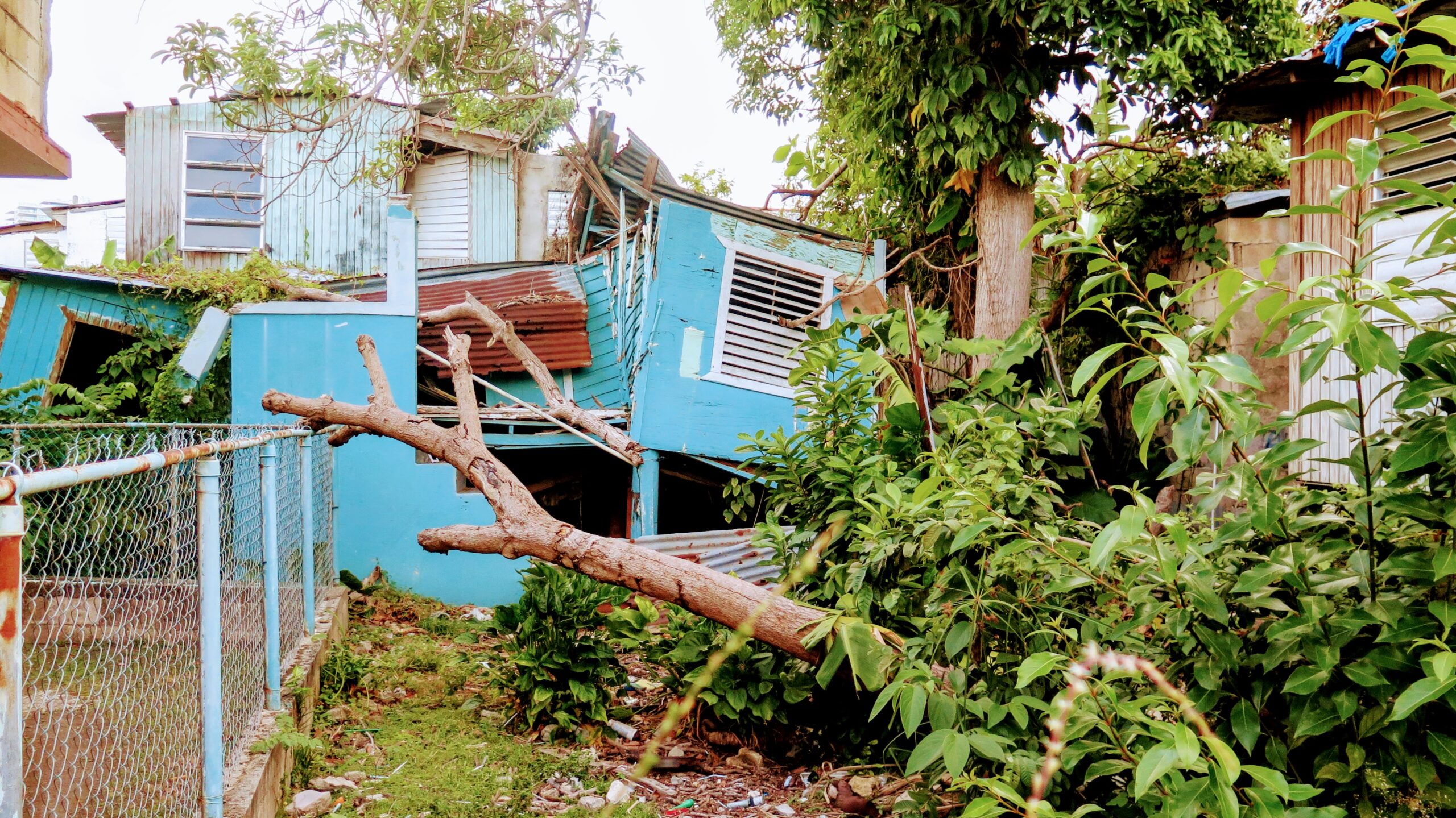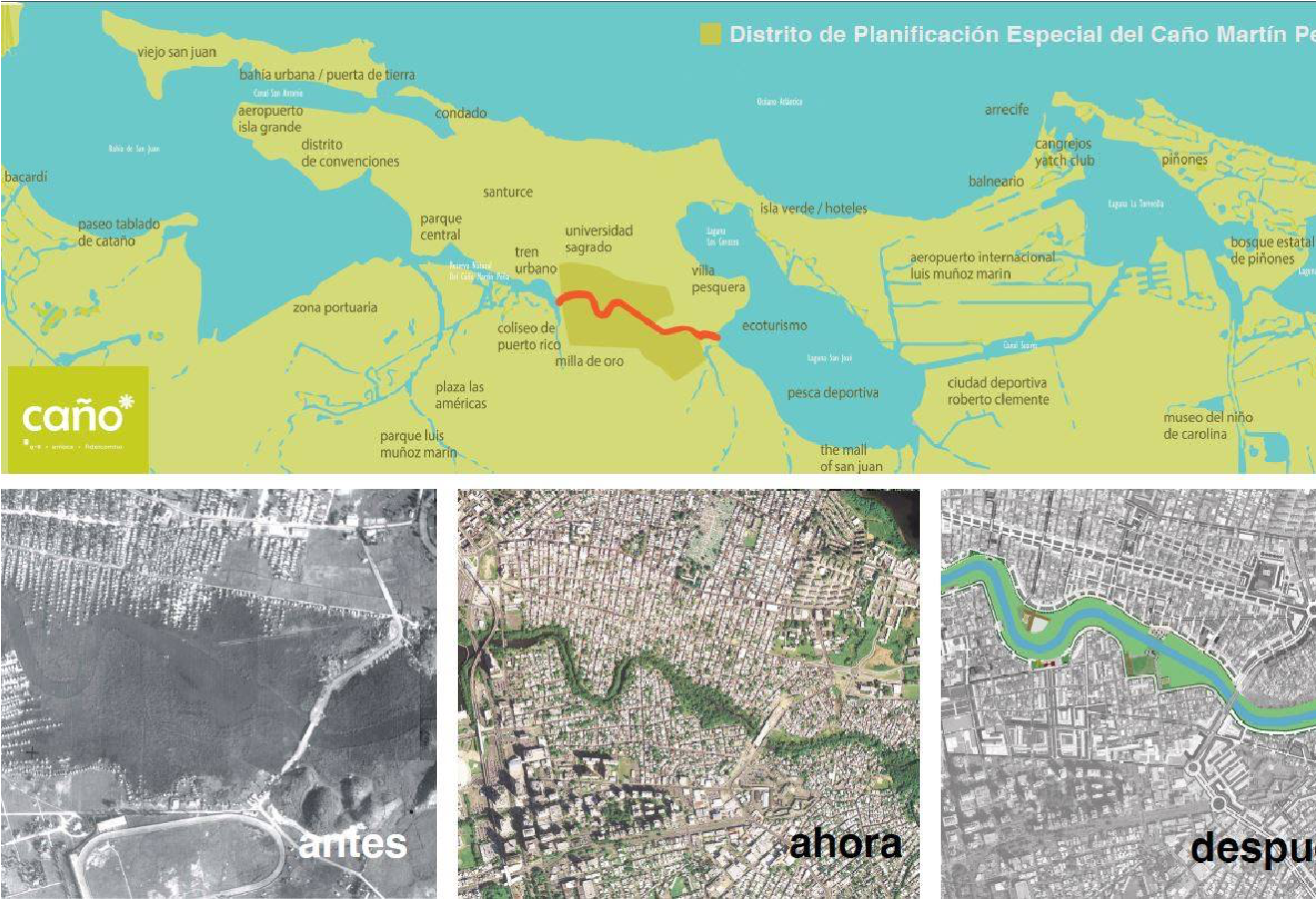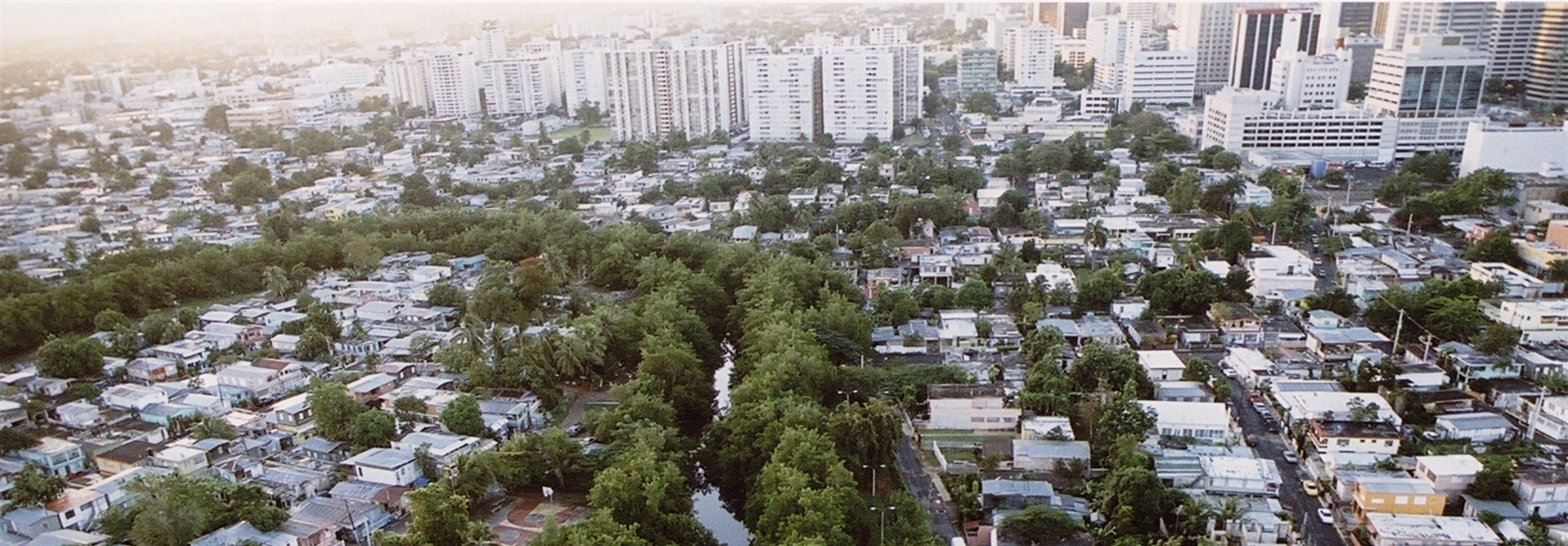
This is the latest in a series of articles about Community Land Trust (CLT) experiences around the world. We selected a few cases based on their potential to inspire others. These examples show how varied CLTs are despite always having the same basic structure: a nonprofit organization made up of residents owns the land in an area, while residents own or rent the homes themselves. Our objective is to present lessons learned from international experiences with CLTs, so we can reflect on how to reach the model’s greatest potential in Brazil and overcome the challenges faced in other contexts. Here, we explore the experience of the Fideicomiso de la Tierra Caño Martín Peña, a CLT located in the city of San Juan, capital of Puerto Rico.
Fideicomiso de la Tierra was the Spanish name given to the first Community Land Trust (CLT) in Latin America, by residents of the Martín Peña communities of Puerto Rico. The model was adopted in response to the perceived risk of gentrification by residents when a project to dredge the Martín Peña Channel was developed by local authorities. Located in the financial center of Puerto Rico’s capital, San Juan, and based on their historic experiences and understanding of local dynamics, residents knew that public investment in the area would lead to a real estate rush. Unlike previous CLTs in the Global North, however, the Fideicomiso de la Tierra was designed to regularize consolidated informal settlements, rather than develop affordable housing from scratch.
For decades the communities surrounding the Martín Peña Channel faced major infrastructure challenges, in part due to the channel’s waters silting and frequently flooding homes. The government’s proposal to upgrade the area included dredging the channel and individual land titling, intended, according to them, to improve living conditions for residents. Concerns abounded, however, regarding the probable appreciation of real estate and resulting gentrification that would expel a significant portion of residents.

Discussions around this development project began in 2000, which ultimately led to the development of the Community Land Trust. Over 800 community meetings were held, during which the CLT model was identified as a potential solution, leading residents to fight for a law that ultimately allowed for the formalization of the Fideicomiso de la Tierra Caño Martín Peña in 2004. The process was facilitated by ENLACE, a public, limited-term corporation (25 years) created by the Puerto Rican government in response to community demand, to carry out the Caño’s economic and urban development. ENLACE works closely with residents via the G-8, a community organization composed of leaders from the eight informal settlements comprising the Caño Martín Peña and responsible for organizing and tracking project implementation and ensuring it is carried out in accordance with community demands.

Residents and professionals involved in the project worked together to prepare a series of mechanisms, including the bill that was presented and approved by the legislature, Law 489-2004. Known as the Comprehensive Development Law for the Caño Martín Peña Environmental Planning District, it played a fundamental role in formalizing the Fideicomiso de la Tierra. Most housing was informal and built on public land, which made it difficult to implement the model. The new law meant the titles for publicly owned land in the region were transferred to ENLACE, which in turn transferred titles to the CLT—the Fideicomiso de la Tierra—once its regulation was established.
During this transitional period, ENLACE was responsible for advancing the area’s regularization. Residents acquired surface rights (individual titles to the buildings), while ENLACE retained the land titles. In the period from 2006 to 2008, many community workshops were held to develop the Fideicomiso General Regulations, eventually enacted in October 2008. Once the regulation framework was formalized, ENLACE transferred ownership of the land to the Fideicomiso by means of a formal deed.

The managing council of the Fideicomiso de la Tierra Caño Martín Peña is composed of eleven members:
- Six community residents who are members of the CLT (four elected at a general meeting and two appointed by the G-8);
- Two non-resident members (appointed by the management council)
- Three representatives from government institutions (one member from the ENLACE Corporation, one nominated by San Juan’s mayor, and one nominated by Puerto Rico’s governor).
In addition to the eleven members with voting rights, the president of the G-8 also participates in the council, but without voting rights. And constant home visits, community meetings, and other approaches are carried out to ensure all residents are constantly heard.
The council’s purpose is to distribute surface right titles to residents, avoid involuntary displacement, and ongoing acquisition and maintenance of housing, gardens, schools, and other land uses at affordable prices, with the active participation of residents being central in these processes.
Currently, the Fideicomiso de la Tierra manages the land of member families in the Special Planning District area and serves over 2,000 families. It is important to note that, although large, this number does not represent all residents of the Caño Martín Peña communities. It is not a compulsory model; around a quarter of residents in the eight communities decided to join the CLT arrangement, with others joining over time. The combination of the social dimensions of affordable housing, legal, environmental, and urban planning has led the experiment to receive international awards. It is a paradigmatic case that serves as a model of CLT success for the Global South, especially for Latin America.
